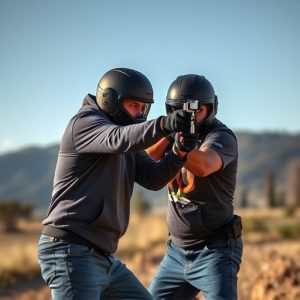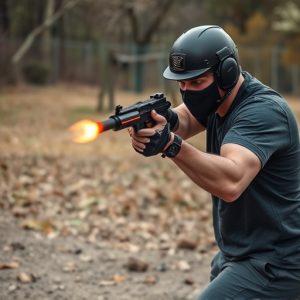Contact vs. Projectile Stun Devices: Disguised Guns & Self-Defense Tools
Disguised stun guns, versatile self-defense tools, offer discreet protection through electric shocks…….
Disguised stun guns, versatile self-defense tools, offer discreet protection through electric shocks without causing permanent harm. They come in two main types: projectile stun guns for remote incapacitation and contact weapons for direct physical defense. Popular for their portability and stealth, these devices are legal in many regions but subject to strict regulations worldwide. As personal safety becomes a top priority, disguised stun guns have revolutionized non-lethal self-defense options, especially in bustling urban settings.
“In the realm of personal defense, stun weapons have emerged as a game-changer, offering individuals a non-lethal way to protect themselves. This comprehensive guide delves into the intricate world of stun devices, specifically focusing on the distinction between contact and projectile designs. From understanding the fundamentals of stun technology to exploring disguised stun guns for discreet self-defense, we navigate the landscape of legal considerations and evolving trends in personal defense tools. Uncover the optimal choices for various scenarios, ensuring you’re prepared with the right stun weapon for any situation.”
- Understanding Stun Weapons: A Comprehensive Overview
- Disguised Stun Guns: Design and Functionality
- Contact vs. Projectile Stun Devices: Key Differences
- Self-Defense Applications: When to Choose Each Type
- Legal Considerations: Regulations and Ownership Limits
- The Evolving Landscape of Personal Defense Tools
Understanding Stun Weapons: A Comprehensive Overview
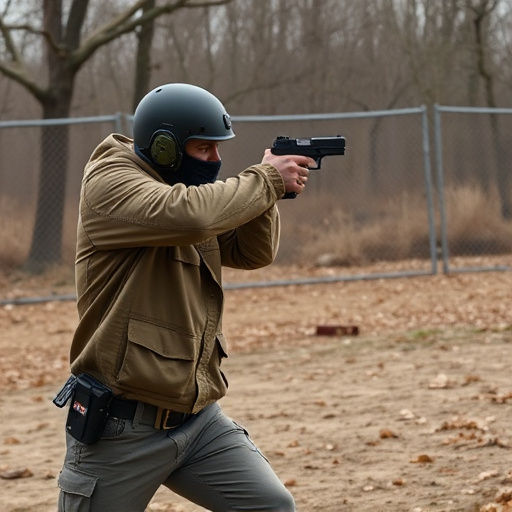
Stun weapons, often referred to as non-lethal or less-lethal force tools, are designed to temporarily incapacitate a target through electrical shock, sensory overload, or other means, without causing permanent harm or death. These devices have gained popularity not only among law enforcement agencies but also as self-defense tools for civilians. Disguised stun guns, often built into everyday objects like flashlights or keychains, offer a covert way to protect oneself in potentially dangerous situations.
The two primary types of stun weapons are projectile and contact stun devices. Projectile stun guns fire small beams or darts that deliver an electric charge upon impact, rendering the target immobile for a short period. On the other hand, contact stun weapons, such as stun batons or handheld devices, rely on direct physical contact to administer a shock. Each type has its advantages and applications, with concealed, portable stun guns being popular choices for personal safety, especially when out in public or during travel.
Disguised Stun Guns: Design and Functionality
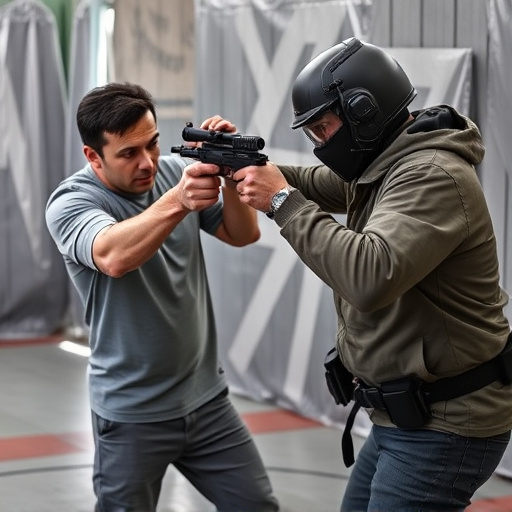
Disguised stun guns, also known as self-defense tools designed with stealth in mind, offer a unique blend of functionality and surprise. These devices are meticulously crafted to resemble everyday items like flashlights, pens, or even personal care products, allowing them to be carried discreetly without raising suspicion. Their design focuses on both aesthetic camouflage and practical utility, making them appealing options for those seeking effective yet subtle self-defense mechanisms.
The functionality of these stun guns lies in their ability to deliver a powerful electric shock with minimal warning. When activated, they emit a high-voltage pulse that can incapacitate an attacker momentarily, providing the user with crucial time to escape or defend themselves further. The disguised nature adds an element of surprise, as the perpetrator’s intentions are not immediately apparent, giving the victim a chance to react before the stun is deployed. This innovative approach to personal safety combines the reliability of traditional stun devices with the discretion of everyday objects, making them valuable assets in self-defense strategies.
Contact vs. Projectile Stun Devices: Key Differences
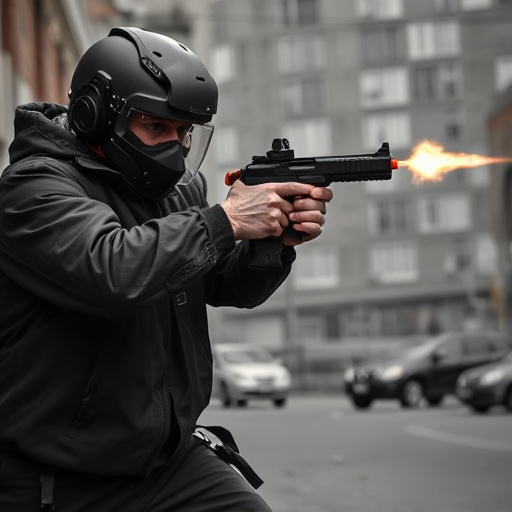
In the realm of self-defense tools, stun devices have emerged as powerful options for personal safety. Among these, contact and projectile stun weapons stand out as distinct categories with unique advantages and considerations. Contact stun guns, often disguised as everyday objects like flashlights or pens, deliver a high-voltage electric shock upon direct physical contact with the target. Their effectiveness lies in their ability to incapacitate assailants quickly and discreetly, making them ideal for situations requiring stealth and surprise. These devices are generally easy to use and carry, appealing to those seeking effective yet hidden self-defense solutions, such as disguised stun guns.
Projectile stun weapons, on the other hand, project an electric current through air or water, striking targets at a distance. This method offers a non-lethal way to neutralize threats from afar, which is beneficial in scenarios where direct contact may be avoided or dangerous. While they might not be as discreet as their contact counterparts, projectile stun devices provide a layer of safety by enabling users to maintain distance during self-defense situations. These weapons are particularly useful for folks who prefer a more visible yet non-lethal means of personal protection, especially in today’s digital age where awareness and accessibility of such tools have increased significantly.
Self-Defense Applications: When to Choose Each Type
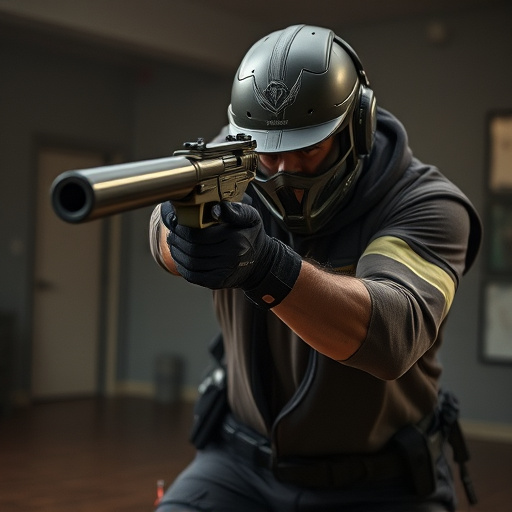
When it comes to self-defense, choosing between projectile and contact stun weapons depends on various factors, including personal preference, situation, and legality in your region. Projectile stun devices, such as stun guns or tasers, offer a discreet option for self-defense. Their non-lethal force can be a game-changer in high-stress situations, allowing users to disable an attacker from a distance. Disguised stun guns, in particular, can be carried like everyday objects, making them ideal for those seeking covert protection without drawing unnecessary attention.
On the other hand, contact stun weapons, like electronic stun batons or hand strobes, require direct physical contact to activate. These devices are excellent for close-quarters self-defense scenarios where speed and immediate impact are crucial. Unlike projectile methods, which might not always be visible to bystanders, contact stun tools can serve as a loud signal for help while effectively immobilizing an assailant. For individuals who prefer a more overt display of protection or those in situations demanding rapid response, contact stun weapons could be the better choice.
Legal Considerations: Regulations and Ownership Limits

The legality of stun weapons, whether projectile or contact-based, varies significantly across jurisdictions worldwide. In many regions, these devices are tightly regulated due to their potential for misuse and the associated risks to public safety. Disguised stun guns, often marketed as self-defense tools, fall into a legal grey area in some places, with restrictions on who can own them and where they can be carried.
Ownership limits typically depend on local laws regarding stun weapons as firearms or non-lethal force tools. Some countries allow their use only for law enforcement agencies or private security personnel, while others enable civilian ownership with specific licenses. Regulations often include age restrictions, mandatory training, registration requirements, and limitations on the power output or voltage of the device to ensure they do not cause permanent harm.
The Evolving Landscape of Personal Defense Tools
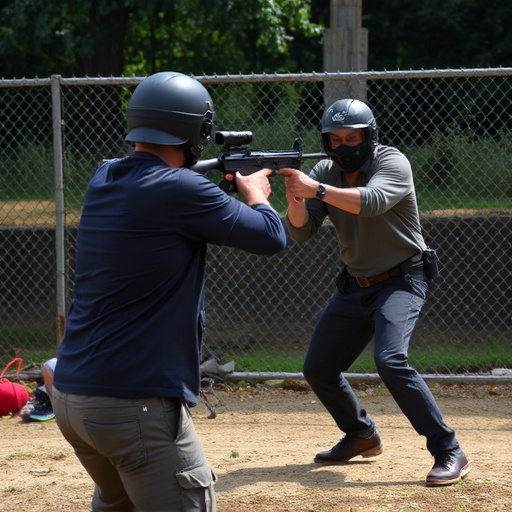
The world of personal defense tools has undergone a significant metamorphosis, evolving from traditional firearms to a diverse array of innovative options. Among these, disguised stun guns stand out as game-changers in the realm of self-defense. These compact and often unassuming devices offer individuals a discreet yet powerful means of protecting themselves in various situations. As societal needs change and urban landscapes become more vibrant and bustling, the demand for effective yet non-lethal self-defense options has surged.
This shift is particularly notable with the rise of disguised stun guns, which can range from small, easily concealable devices to more sophisticated tools that integrate advanced technology. These modern defense mechanisms cater to folks seeking alternatives to conventional firearms while still ensuring their safety and well-being. In today’s digital era, where information spreads swiftly, individuals are becoming more proactive in equipping themselves with the right tools for self-defense, making disguised stun guns a popular choice for those who prioritize both personal security and discretion.
In conclusion, both contact and projectile stun weapons offer unique advantages in self-defense scenarios. Disguised stun guns, a specialized type of contact stun device, provide an innovative solution for those seeking to blend protection with everyday carry items. Understanding the key differences between these technologies is essential when choosing personal defense tools, especially considering legal regulations that vary across regions. By staying informed about the evolving landscape of self-defense options, individuals can make strategic decisions to enhance their safety and security while navigating legal boundaries.

